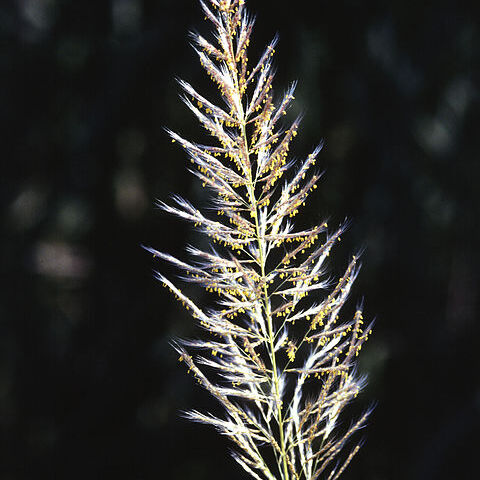Tall rhizomatous perennial; culms 2–4 m. high or more.. Leaf-blades 50–90 cm. long, 5–15(–40) mm. wide.. Panicle 25–60 cm. long, the axis hirsute; racemes 3–15 cm. long, usually much longer than the supporting branches, the internodes and pedicels hirsute.. Spikelets 3.5–7 mm. long, the callus bearded with silky white hairs 2–3 times as long as the spikelet; glumes subcoriaceous in the lower third, glabrous on the back, ciliate on the margins above; upper lemma subulate and up to 3 mm. long, or suppressed.
A strong clumpy perennial grass. It has rhizomes or underground stems. The stalks are upright, hard and slightly thickened at the nodes. They can be 4 m high. The leaves are long (150 cm) and narrow (4 cm) with fine teeth on the edge. The leaves are flat. The flowers at the tip are like feathers.
Panicle 25–60 cm long, the axis hirsute; racemes 3–15 cm long, usually much longer than supporting branches, the internodes and pedicels hirsute.
Spikelets 3.5–7 mm long, the callus barbate with silky white hairs 2–3 times as long as the spikelet.
Glumes subcoriaceous in the lower third, glabrous on the back, ciliate on the margins above.
Superior lemma subulate and up to 3 mm long, or suppressed.
Leaf laminas 5–15(40) mm wide.
Culms 200–400 cm high or more.
Rhizomatous perennial.


